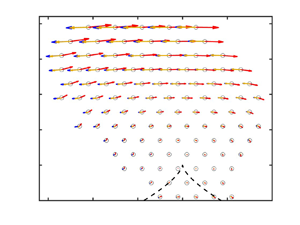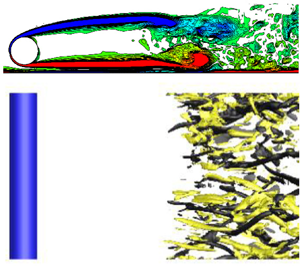Refine listing
Actions for selected content:
1416829 results in Open Access
“Wine”ing about blood culture bottles: using easy-to-follow visual cues to collect appropriate volumes
-
- Journal:
- Infection Control & Hospital Epidemiology / Volume 45 / Issue 7 / July 2024
- Published online by Cambridge University Press:
- 15 March 2024, pp. 910-911
- Print publication:
- July 2024
-
- Article
-
- You have access
- HTML
- Export citation
A representation-learning approach for insurance pricing with images
-
- Journal:
- ASTIN Bulletin: The Journal of the IAA / Volume 54 / Issue 2 / May 2024
- Published online by Cambridge University Press:
- 15 March 2024, pp. 280-309
- Print publication:
- May 2024
-
- Article
-
- You have access
- Open access
- HTML
- Export citation
Not all consequences should be accepted: Letter to the Editor Reply to “Reportable infections following colon surgery in a large public healthcare system in New York City: the consequences of being a level 1 trauma center”
-
- Journal:
- Infection Control & Hospital Epidemiology / Volume 45 / Issue 7 / July 2024
- Published online by Cambridge University Press:
- 15 March 2024, pp. 911-912
- Print publication:
- July 2024
-
- Article
-
- You have access
- HTML
- Export citation
Interorganizational Knowledge Transfer in Mass Gatherings: Exploring the Health and Safety Stakeholders’ Perceptions Participating in the Athens Marathon
-
- Journal:
- Prehospital and Disaster Medicine / Volume 39 / Issue 2 / April 2024
- Published online by Cambridge University Press:
- 15 March 2024, pp. 163-169
- Print publication:
- April 2024
-
- Article
-
- You have access
- Open access
- HTML
- Export citation
Approximate homomorphisms and sofic approximations of orbit equivalence relations
- Part of
-
- Journal:
- Ergodic Theory and Dynamical Systems / Volume 44 / Issue 12 / December 2024
- Published online by Cambridge University Press:
- 15 March 2024, pp. 3455-3480
- Print publication:
- December 2024
-
- Article
-
- You have access
- Open access
- HTML
- Export citation
A Snapshot of Academic Job Placements in Linguistics in the US and Canada
-
- Journal:
- Canadian Journal of Linguistics/Revue canadienne de linguistique / Volume 69 / Issue 1 / March 2024
- Published online by Cambridge University Press:
- 15 March 2024, pp. 129-143
-
- Article
-
- You have access
- Open access
- HTML
- Export citation
An experimental evaluation of robot-stopping approaches for improving fluency in collaborative robotics
-
- Article
-
- You have access
- Open access
- HTML
- Export citation
Brian P. Cooper. Travel, Travel Writing, and British Political Economy: “Instructions for Travellers,” circa 1750–1850 London: Routledge, 2022. Pp. 347. $128.00 (cloth).
-
- Journal:
- Journal of British Studies / Volume 63 / Issue 2 / April 2024
- Published online by Cambridge University Press:
- 15 March 2024, pp. 488-490
-
- Article
- Export citation
Structure and role of the pressure Hessian in regions of strong vorticity in turbulence
-
- Journal:
- Journal of Fluid Mechanics / Volume 983 / 25 March 2024
- Published online by Cambridge University Press:
- 15 March 2024, R2
-
- Article
-
- You have access
- Open access
- HTML
- Export citation
L2 to Lp bounds for spectral projectors on the Euclidean two-dimensional torus
- Part of
-
- Journal:
- Proceedings of the Edinburgh Mathematical Society / Volume 67 / Issue 2 / May 2024
- Published online by Cambridge University Press:
- 15 March 2024, pp. 431-459
-
- Article
- Export citation
Research methods for IDs and TBLT: A substantive and methodological review
-
- Journal:
- Studies in Second Language Acquisition / Volume 46 / Issue 3 / July 2024
- Published online by Cambridge University Press:
- 15 March 2024, pp. 617-643
- Print publication:
- July 2024
-
- Article
-
- You have access
- Open access
- HTML
- Export citation
First sightings of mimic octopus Thaumoctopus mimicus (Cephalopoda: Octopodidia) from the Southwest Indian Ocean with photographic records from the Inhambane Province of southern Mozambique
-
- Journal:
- Journal of the Marine Biological Association of the United Kingdom / Volume 104 / 2024
- Published online by Cambridge University Press:
- 15 March 2024, e31
-
- Article
- Export citation
Turbulent wake characteristics for a circular cylinder in proximity to a moving wall
-
- Journal:
- Journal of Fluid Mechanics / Volume 983 / 25 March 2024
- Published online by Cambridge University Press:
- 15 March 2024, A18
-
- Article
-
- You have access
- Open access
- HTML
- Export citation
JSP volume 53 issue 2 Cover and Back matter
-
- Journal:
- Journal of Social Policy / Volume 53 / Issue 2 / April 2024
- Published online by Cambridge University Press:
- 15 March 2024, pp. b1-b2
- Print publication:
- April 2024
-
- Article
-
- You have access
- Export citation
Exploring the Alternatives to the Male-Breadwinner Model – The Implications for Social Policy Study
-
- Journal:
- Social Policy and Society / Volume 24 / Issue 1 / January 2025
- Published online by Cambridge University Press:
- 15 March 2024, pp. 6-15
- Print publication:
- January 2025
-
- Article
-
- You have access
- Open access
- HTML
- Export citation
TILTING COMPLEXES AND CODIMENSION FUNCTIONS OVER COMMUTATIVE NOETHERIAN RINGS
- Part of
-
- Journal:
- Nagoya Mathematical Journal / Volume 255 / September 2024
- Published online by Cambridge University Press:
- 15 March 2024, pp. 618-693
- Print publication:
- September 2024
-
- Article
-
- You have access
- Open access
- HTML
- Export citation
Ethics Within the Divine Order – Why Oliveira’s Symmetry Challenge Fails
-
- Journal:
- New Blackfriars / Volume 105 / Issue 4 / July 2024
- Published online by Cambridge University Press:
- 15 March 2024, pp. 416-427
- Print publication:
- July 2024
-
- Article
- Export citation
Eoin Bentick. Literatures of Alchemy in Medieval and Early Modern England Cambridge: D.S. Brewer, 2022. Pp. 228. $105.00 (cloth).
-
- Journal:
- Journal of British Studies / Volume 63 / Issue 2 / April 2024
- Published online by Cambridge University Press:
- 15 March 2024, pp. 433-434
-
- Article
- Export citation
JSP volume 53 issue 2 Cover and Front matter
-
- Journal:
- Journal of Social Policy / Volume 53 / Issue 2 / April 2024
- Published online by Cambridge University Press:
- 15 March 2024, pp. f1-f2
- Print publication:
- April 2024
-
- Article
-
- You have access
- Export citation






